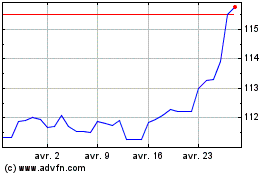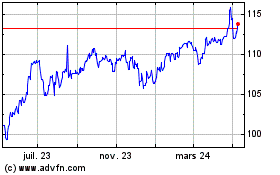China Manufacturing Sector Logs Unexpected Contraction
01 Août 2024 - 3:27AM
RTTF2
China's manufacturing sector fell into the contraction zone in
July on renewed decline in new work and weak output growth, survey
data from S&P Global showed on Thursday.
The Caixin manufacturing Purchasing Managers' Index fell to 49.8
in July from 51.8 in June. The reading was expected to drop
moderately to 51.5.
The score suggested that conditions in the manufacturing sector
deteriorated for the first time in nine months.
The official PMI survey, released earlier this week, showed that
China's manufacturing sector continued to shrink in July. The
factory PMI slid to 49.4 in July from 49.5 a month ago. At the same
time, the non-manufacturing index fell to 50.2, but remained above
the neutral 50.0 mark.
Manufacturing output expansion was the softest in the nine-month
sequence during July. As a result, new orders fell for the first
time in a year. Subdued demand conditions and reductions in client
budgets led to the decrease in new work. Nonetheless, export orders
continued to grow, albeit at slower pace.
Manufacturers' purchasing activity decreased for the first time
since October 2023. This led to a renewed depletion of stocks of
purchases.
On the other hand, stocks of finished goods increased again,
partially driven by delays in outbound shipments. Average lead
times for the delivery of inputs lengthened for the second straight
month.
Employment dropped fractionally in July. Some firms added
headcounts to cope with rising workloads, while some opted to cut
staffing levels, anticipating lower production needs.
Regarding prices, the survey showed that selling prices
decreased for the first time since May. Prices were reduced to
support sales amid increased competition. Input cost inflation
eased to the lowest in the current four-month sequence.
Finally, confidence among manufacturers remained positive in
July. Despite the fall in new work, firms were positive that
business development efforts and the launch of new products can
help drive sales in the year ahead.
Caixin Insight Group Senior Economist Wang Zhe said the 4.7
percent economic growth in the second quarter makes the annual
growth target of around 5 percent challenging. The economist said
policy efforts should focus on stabilizing growth, improving
employment, safeguarding people's livelihoods, intensifying policy
stimulus, ensuring effective implementation of previous policies,
and unleashing market vitality.
CAD vs Yen (FX:CADJPY)
Graphique Historique de la Devise
De Juil 2024 à Août 2024

CAD vs Yen (FX:CADJPY)
Graphique Historique de la Devise
De Août 2023 à Août 2024
